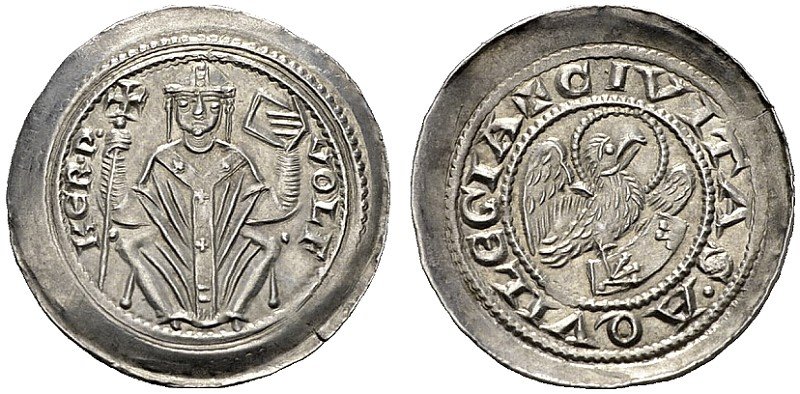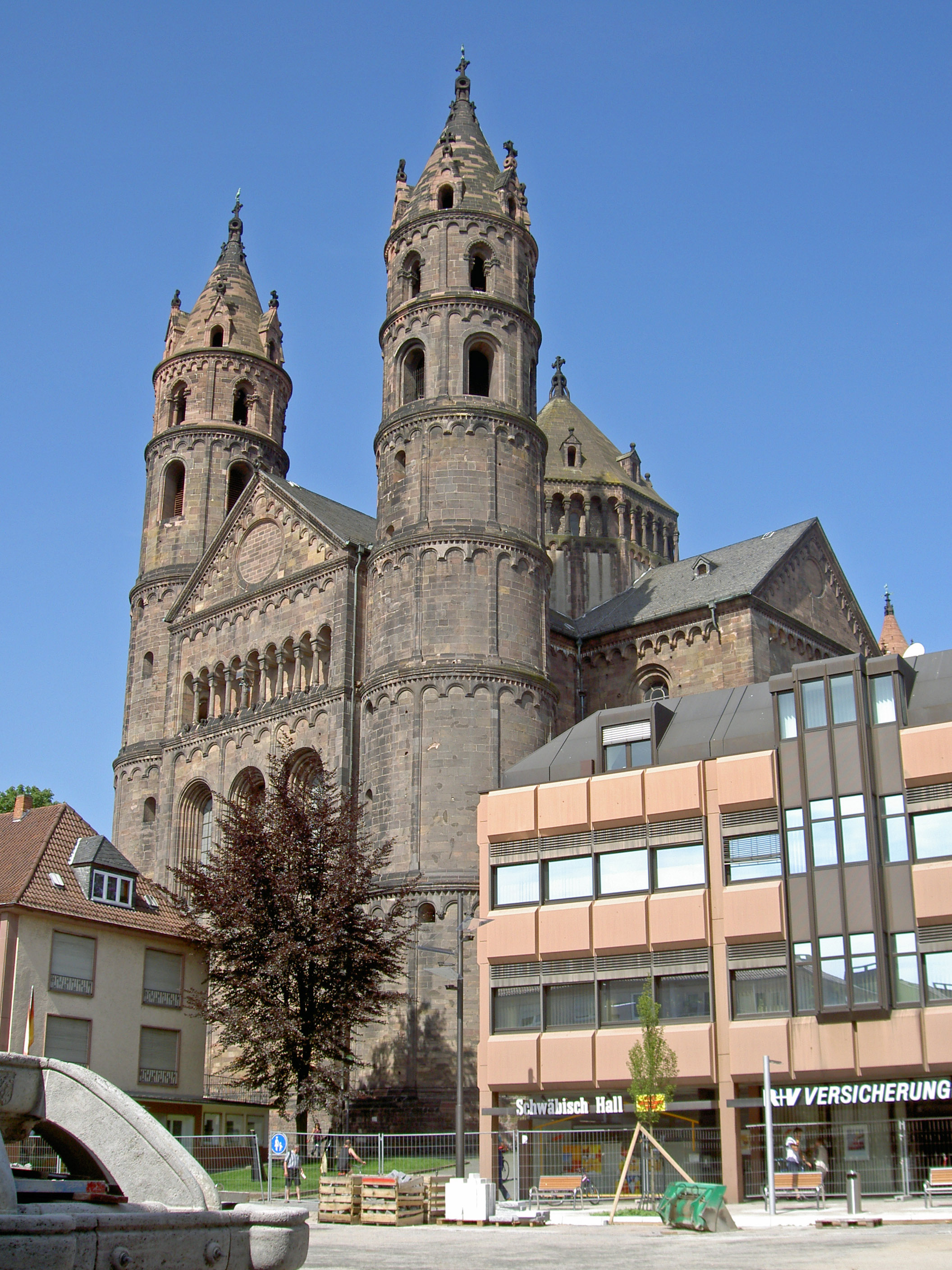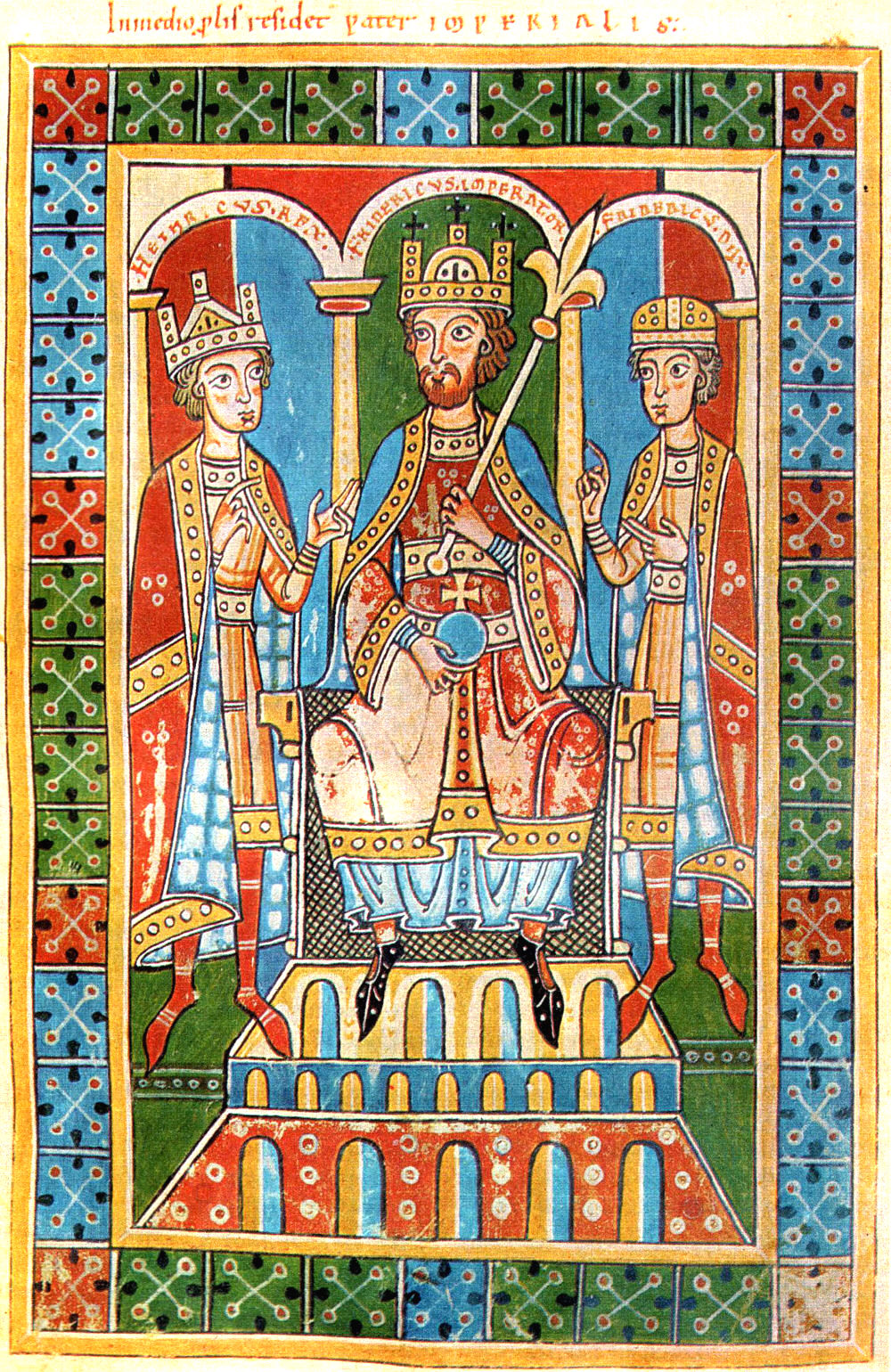|
Wolfger Of Erla
Wolfger von Erla, known in Italian as Volchero (c. 1140 – 23 January 1218), was the Bishop of Passau from 1191 until 1204 and Patriarch of Aquileia thereafter until his death. He was renowned in his own time as a diplomat and peacemaker. He participated in the highest levels of the politics of the Holy Roman Empire, traveling frequently between Germany and Italy, where he served as imperial legate. He took part in the Crusade of 1197 and played a role in founding the Teutonic Knights. Wolfger's courts at Passau and Aquileia attracted scholars and writers. His possible patronage of the ''Nibelungenlied'' has assured him a central place in the history of German literature. Early life Wolfger was born to a noble family from Erla on the river Enns. Early documents show him as a married layman and with a least one son named Ottokar. He probably entered minor orders as a widower. In 1183, he became the provost of Pfaffmünster near Straubing and in 1184 of Zell am See. He became a c ... [...More Info...] [...Related Items...] OR: [Wikipedia] [Google] [Baidu] |
Aquileia - Patriarca Volchiero - Image02504
Aquileia / / / / ;Bilingual name of ''Aquileja – Oglej'' in: vec, Aquiłeja / ; Slovenian: ''Oglej''), group=pron is an ancient history, ancient Roman Republic, Roman city in Italy, at the head of the Adriatic Sea, Adriatic at the edge of the lagoons, about from the sea, on the river Natiso (modern Natisone), the course of which has changed somewhat since Roman times. Today, the city is small (about 3,500 inhabitants), but it was large and prominent in classical antiquity as one of the world's largest cities with a population of 100,000 in the 2nd century AD and is one of the main archaeological sites of northern Italy. In late antiquity the city was the first city in the Italian Peninsula to be Sack of Aquileia, sacked by Attila the Hun. History Classical Antiquity Roman Republic Aquileia was founded as a colony by the Ancient Rome, Romans in 180/181 BC along the Natiso River, on land south of the Julian Alps but about north of the lagoons. The colony served as a ... [...More Info...] [...Related Items...] OR: [Wikipedia] [Google] [Baidu] |
Cathedral Of Passau
St. Stephen's Cathedral (german: Dom St. Stephan) is a baroque church from 1688 in Passau, Germany, dedicated to Saint Stephen. It is the seat of the Catholic Bishop of Passau and the main church of his diocese. Since 730, there have been many churches built on the site of the current cathedral. The current church, a baroque building around long, was built from 1668 to 1693 after a fire in 1662 destroyed its predecessor, of which only the late gothic eastern side remains. The cathedral's overall plan was made by Carlo Lurago, its interior decoration by Giovanni Battista Carlone, and its frescos by Carpoforo Tencalla. Passau Cathedral's used to be the largest organ in the world. It still is the largest church organ outside USA. Over time, it has been outgrown by more recent instruments, for instance Wanamaker's organ in the USA. The organ currently has 17,774 pipes and 233 registers, all of which can be played with the five-manual general console in the gallery. Portions ... [...More Info...] [...Related Items...] OR: [Wikipedia] [Google] [Baidu] |
Akko
Acre ( ), known locally as Akko ( he, עַכּוֹ, ''ʻAkō'') or Akka ( ar, عكّا, ''ʻAkkā''), is a city in the coastal plain region of the Northern District of Israel. The city occupies an important location, sitting in a natural harbour at the extremity of Haifa Bay on the coast of the Mediterranean's Levantine Sea."Old City of Acre." , World Heritage Center. World Heritage Convention. Web. 15 Apr 2013 Aside from coastal trading, it was also an important waypoint on the region's coastal road and the road cutting inland along the |
Frederick I, Duke Of Austria (Babenberg)
Frederick I (german: Friedrich I. von Österreich, c. 1175 – 16 April 1198Lechner 1976, p. 193.), known as Frederick the Catholic (german: Friedrich der Katholische), was the Duke of Austria from 1195 to 1198. He was a member of the House of Babenberg.Lingelbach 1913, pp. 92–93. Biography Frederick the Catholic was born in 1175, the son of Duke Leopold V of Austria and Helena of Hungary. In 1192, he was enfeoffed with his father with Austria and Styria, while the younger Leopold VI had no claim. On Leopold V's death-bed, at Graz, he caught all by surprise by granting the Duchy of Styria to Leopold VI, with Emperor Henry VI's approval. None raised objections and thus, Austria and Styria remained divided. Frederick the Catholic, however, did not receive his enfeoffment by the Emperor personally; instead he sent Wolfger of Erla, Bishop of Passau on his behalf.Leeper 1941 p.285 As the new Duke finally received his land in 1195, he still faced the restitution of the English ho ... [...More Info...] [...Related Items...] OR: [Wikipedia] [Google] [Baidu] |
Worms, Germany
Worms () is a city in Rhineland-Palatinate, Germany, situated on the Upper Rhine about south-southwest of Frankfurt am Main. It had about 82,000 inhabitants . A pre-Roman foundation, Worms is one of the oldest cities in northern Europe. It was the capital of the Kingdom of the Burgundians in the early fifth century, hence is the scene of the medieval legends referring to this period, notably the first part of the ''Nibelungenlied''. Worms has been a Roman Catholic bishopric since at least 614, and was an important palatinate of Charlemagne. Worms Cathedral is one of the imperial cathedrals and among the finest examples of Romanesque architecture in Germany. Worms prospered in the High Middle Ages as an imperial free city. Among more than a hundred imperial diets held at Worms, the Diet of 1521 (commonly known as ''the'' Diet of Worms) ended with the Edict of Worms, in which Martin Luther was declared a heretic. Worms is also one of the historical ShUM-cities as a cultural ... [...More Info...] [...Related Items...] OR: [Wikipedia] [Google] [Baidu] |
Kingdom Of Sicily
The Kingdom of Sicily ( la, Regnum Siciliae; it, Regno di Sicilia; scn, Regnu di Sicilia) was a state that existed in the south of the Italian Peninsula and for a time the region of Ifriqiya from its founding by Roger II of Sicily in 1130 until 1816. It was a successor state of the County of Sicily, which had been founded in 1071 during the Norman conquest of the southern peninsula. The island was divided into three regions: Val di Mazara, Val Demone and Val di Noto. In 1282, a revolt against Angevin rule, known as the Sicilian Vespers, threw off Charles of Anjou's rule of the island of Sicily. The Angevins managed to maintain control in the mainland part of the kingdom, which became a separate entity also styled ''Kingdom of Sicily'', although it is commonly referred to as the Kingdom of Naples, after its capital. From 1282 to 1409 the island was ruled by the Spanish Crown of Aragon as an independent kingdom, then it was added permanently to the Crown. After 1302, the isl ... [...More Info...] [...Related Items...] OR: [Wikipedia] [Google] [Baidu] |
Pope Celestine III
Pope Celestine III ( la, Caelestinus III; c. 1106 – 8 January 1198), was the head of the Catholic Church and ruler of the Papal States from 30 March or 10 April 1191 to his death in 1198. He had a tense relationship with several monarchs, including Emperor Henry VI, King Tancred of Sicily, and King Alfonso IX of León. Early career Giacinto Bobone was born into the noble Orsini family in Rome. He was appointed as cardinal-deacon in 1144 by Celestine II or Lucius II. Considered by the Roman Curia as an expert on Spain, Bobone conducted two legatine missions to Spain in (1154–55) and (1172–75) as the Cardinal-Deacon of Santa Maria in Cosmedin. Pontificate Celestine was elected on 29/30 March 1191 and ordained a priest 13 April 1191. He crowned Emperor Henry VI on the day after his election in 1191. In 1192, Celestine recognized Tancred as king of Sicily, despite Henry VI's wife's claim. He threatened to excommunicate Henry VI for wrongfully keeping King Richard I of E ... [...More Info...] [...Related Items...] OR: [Wikipedia] [Google] [Baidu] |
Emperor Henry VI
Henry VI (German: ''Heinrich VI.''; November 1165 – 28 September 1197), a member of the Hohenstaufen dynasty, was King of Germany (King of the Romans) from 1169 and Holy Roman Emperor from 1191 until his death. From 1194 he was also King of Sicily. Henry was the second son of Emperor Frederick Barbarossa and Beatrice I, Countess of Burgundy. Well educated in the Latin language, as well as Roman and canon law, Henry was also a patron of poets and a skilled poet himself. In 1186 he was married to Constance of Sicily, the posthumous daughter of the Norman king Roger II of Sicily. Henry, stuck in the Hohenstaufen conflict with the House of Welf until 1194, had to enforce the inheritance claims by his wife against her nephew Count Tancred of Lecce. Henry's attempt to conquer the Kingdom of Sicily failed at the siege of Naples in 1191 due to an epidemic, with Empress Constance captured. Based on an enormous ransom for the release and submission of King Richard I of England, he conqu ... [...More Info...] [...Related Items...] OR: [Wikipedia] [Google] [Baidu] |
Bari
Bari ( , ; nap, label= Barese, Bare ; lat, Barium) is the capital city of the Metropolitan City of Bari and of the Apulia region, on the Adriatic Sea, southern Italy. It is the second most important economic centre of mainland Southern Italy after Naples. It is a port and university city, as well as the city of Saint Nicholas. The city itself has a population of 315,284 inhabitants, over , while the urban area has 750,000 inhabitants. The metropolitan area has 1.3 million inhabitants. Bari is made up of four different urban sections. To the north is the closely built old town on the peninsula between two modern harbours, with the Basilica of Saint Nicholas, the Cathedral of San Sabino (1035–1171) and the Hohenstaufen Castle built for Frederick II, which is now also a major nightlife district. To the south is the Murat quarter (erected by Joachim Murat), the modern heart of the city, which is laid out on a rectangular grid-plan with a promenade on the sea and the majo ... [...More Info...] [...Related Items...] OR: [Wikipedia] [Google] [Baidu] |
Imperial Diet (Holy Roman Empire)
The Imperial Diet ( la, Dieta Imperii Comitium Imperiale; german: Reichstag) was the deliberative body of the Holy Roman Empire. It was not a legislative body in the contemporary sense; its members envisioned it more like a central forum where it was more important to negotiate than to decide. Its members were the Imperial Estates, divided into three colleges. The diet as a permanent, regularized institution evolved from the ''Hoftage'' (court assemblies) of the Middle Ages. From 1663 until the end of the empire in 1806, it was in permanent session at Regensburg. All Imperial Estates enjoyed immediacy and, therefore, they had no authority above them besides the Holy Roman Emperor himself. While all the estates were entitled to a seat and vote, only the higher temporal and spiritual princes of the College of Princes enjoyed an individual vote (''Virilstimme''), while lesser estates such as imperial counts and imperial abbots, were merely entitled to a collective vote (''Kuriats ... [...More Info...] [...Related Items...] OR: [Wikipedia] [Google] [Baidu] |
Hadmar II Of Kuenring
Hadmar II of Kuenring (''c.'' 1140 – 22 July 1217) was an Austrian '' ministerialis'' of the Kuenring family and son of Albero III of Kuenring. In 1192 he held captive Richard the Lionheart, King of England, at Dürnstein Castle. Hadmar II also erected from 1201 to 1208 the city of Weitra. Because of the creation of this city, they are sometimes referred to in documents as "Lords of Kuenring-Weitra". Hadmar is mentioned in the ''Stifterbuch'' (''Liber fundatorum''; the cartulary of Zwettl Abbey Zwettl Abbey (german: Stift Zwettl) is a Cistercian monastery located in Zwettl in Lower Austria, in the Diocese of St. Pölten. History Zwettl Abbey was founded in 1137 by Hadmar I of Kuenring, with Herrmann, a monk of Heiligenkreuz Abbey, as ...) as second founder (''secundus fundator'') of the monastery. Hadmar's sister Gisela (d. after 1192) was married to Leutwin of Sunnberg. [...More Info...] [...Related Items...] OR: [Wikipedia] [Google] [Baidu] |
Dürnstein
Dürnstein is a small town on the Danube river in the Krems-Land district, in the Austrian state of Lower Austria. It is one of the most-visited tourist destinations in the Wachau region and also a well-known wine growing area. The municipality consists of the Katastralgemeinden of Dürnstein, Oberloiben, and Unterloiben. Etymology The town gained its name from the medieval Dürnstein castle, which overlooked it. The castle's name derived from the German ''duerr/dürr'', meaning "dry", and ''Stein'', "stone". The castle was dry because it was on a rocky hill, high above the damp conditions of the Danube at the base of the hill, and it was built of stone. The modern town stands between the castle and the river. History Dürnstein was first mentioned in 1192 when, in the castle above the town, King Richard I of England was held captive by Leopold V, Duke of Austria, after their dispute during the Third Crusade. Richard the Lionheart had offended Leopold the Virtuous by casting do ... [...More Info...] [...Related Items...] OR: [Wikipedia] [Google] [Baidu] |








